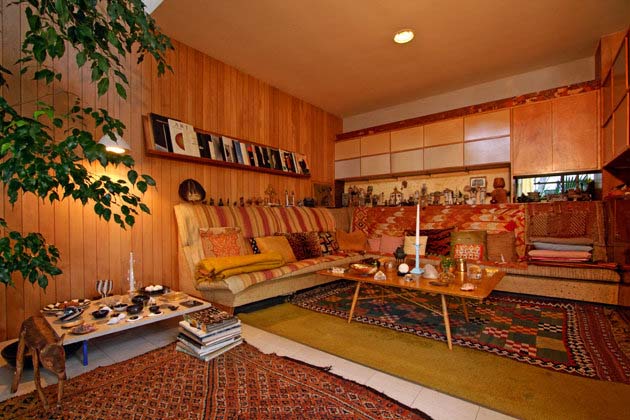moroccan rugs and mid-century design
Moroccan Berber rugs maintain a special place in early and mid-twentieth century Western design - distinctive tribal textiles and rugs that were handcrafted by various tribes of Moroccan Berber and Arab nomads and settled peoples. Berber knotted pile rugs and flat-woven kilims started to attract a lot of attention in the 1920s and 30s
They were displayed in the homes of collectors and design enthusiasts across Europe and North America, often championed by French collectors. Until that time, there was little or no demand for Moroccan carpets internationally, and they had for centuries been woven for personal family use or local trade
The characteristics of modern and mid-century design
These rural weavings deployed a decades-old approach which was in keeping with the tenets of modern and mid-century design - minimalist and abstract forms, bold colors and shapes, and an authentic spirituality. It was for this reason, among others, that they so successfully captured the attention of artists and architects at the beginning of the twentieth century. The rejection of figurative representation, a preference for abstraction, a spontaneous and bold character, even a lack of technical perfection: all these characteristics chimed with modernism’s pursuit of new forms of art
Le Corbusier
Renowned designer Le Corbusier brought these carpets to the attention of others in the early twentieth century, using deep and boldly-colored Berber rugs and flat weaves extensively in Villa La Roche in Paris (1924-25). He also showed Berber carpets in the rooms of the Pavillon de l’Esprit Nouveau (1925), explaining, ‘Do as the Berber do: marry imagination to the most recognizable geometry, but define the imagination’, and included these rugs in the handful of powerful decorations he used in his rooms
Marcel Breuer is believed to have made the Bauhaus aware of Berber textiles, perhaps attracted to the visual dominance and powerful compositions of the carpets. Moroccan rugs also provided a warm interior to a structure made mostly of glass and steel
Alvar Aalto
In 1939, when Alvar Aalto designed Villa Mairea for the parents of Finnish architect Kristian Gullischen, it was furnished with simple yet lush cream and charcoal coloured Beni Ouarain carpets, featuring large and powerful lozenges
Frank Lloyd Wright
Famously, Frank Lloyd Wright employed giant creamy-coloured Beni Ouarain carpets in furnishing his Fallingwater house in 1939, built for the Kaufmann family at Bear Run in Pennsylvania
Eames
Charles and Ray Eames' residence in Pacific Palisades stands as an epitome of midcentury California design, an expression of modernity and optimism : mid-century photos show them using intricate geometric red, rust and orange-hued Moroccan flat-woven rugs in their home to echo this aesthetic
The energy and innovation of Moroccan Berber carpets, with their allusions to human life, made them attractive companions and references for modernist architecture and design
The creative use of color and abstraction in Moroccan Berber rugs, their powerfully independent style, their small irregularities and their authentic expression of culture and beliefs continue to enrich contemporary and 20th-century interiors
Special thanks go to Jürgen Adam's Moroccan Carpets and Modern Art, Arnoldsche Art Publishers, which presents an insightful commentary on the links between modern art genres and North African textile design.






